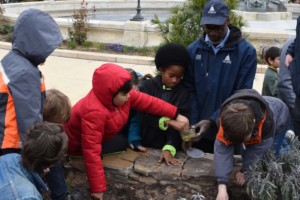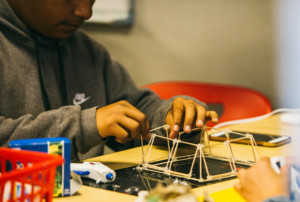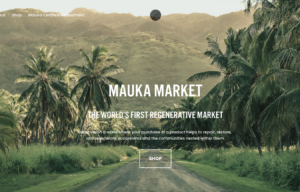Pathways With a Purpose: Supporting Students in Revealing Meaning
Key Points
-
As we look at career pathways for students we might do more to support students to find meaningful work.
-
Data suggests young people care about having jobs that make an impact.

Difference-making, social innovation, social entrepreneurship – there’s a thread that unites these various themes. They are purpose-driven. As we look at career pathways for students we might do more to support students to find meaningful work. Data suggests young people care about having jobs that make an impact. They want to do something that contributes positively to society, and the environment while earning a paycheck. This is something that we must nurture as educators.
Entrepreneurial skills support students to see possibilities in problems. Whether this supports an entrepreneurial pathway where they might create their own venture or intrapreneurial opportunities where they reimagine existing professions or operations within a company or organization – these skills help students rethink the world of work so that the profession they choose drives more meaning/impact. Traditionally, when we talk about entrepreneurial skills, we think about skills like leadership, design thinking, finance, marketing, and creativity. However, we wonder if we might do more to focus on the purpose component. The ‘Why’. How do we help students to tap into their own ‘why’ to drive purpose and meaning out of the seemingly ordinary?
The OECD defines social innovation as “the design and implementation of new solutions that imply conceptual, process, product, or organizational change, which ultimately aim to improve the welfare and wellbeing of individuals and communities.” It’s something that doesn’t necessarily get much focus in the education space, but easily could by making minor adjustments through our pedagogy and practice.
Every educator has the opportunity to support students as social innovators. By putting the purpose into the tasks we ask of our students, impact can become a more natural part of the innovation process. Therefore, how do we help students practice tapping into their ingenuity to create new products and new ways of doing things that solve challenges while also adding value?
Define Purpose-Driven
When we talk about purpose students might need a north star to understand what makes an innovation impactful. Organizations like Compass Education have simple tools to help students navigate the link between nature, society, well-being, and the economy. Other organizations like the Doughnut Economics Action Lab encourage us to explore human prosperity with a social foundation, so no one gets left behind, as well as an ecological ceiling so that we don’t overshoot our planetary boundaries. Each offers a simple-to-use graphic to generate a dialogue around purpose and goals. Once students have a lens through which to think about the impact they would like to generate, it makes their efforts more intentional.
As educators, many are already working to spark problem-solving, critical thinking, creativity, and innovation through hands-on pedagogy. We have a variety of built-in pathways to facilitate social innovation and impactful learning. Whether you’re engaging in STEAM, creating maker spaces, designing project-based learning (PBL), facilitating entrepreneurship or business classes, or embarking on place-based learning there are ample opportunities to spark meaningful innovation. Our job is usually to provide questions, and constraints that help students design for impact.
For instance, if students are designing, building, and creating – we might put some constraints on their work. Encourage them to think about things like their footprint:
- How can we reduce waste?
- How might we rethink the materials we use (e.g. for fashion or construction?)
- How might we ensure workers are treated well, and paid fairly?
- How might we rethink how we package goods and services?
- How might we rethink spaces?
- How might we upcycle old products?
- How might we apply nature-based solutions in new ways or in new places?
- How might we rethink supply chains to reduce distance (transport is a massive cause of emissions)?
- How might we rethink the movement of goods and services?
- How might we apply technology to do good?
- How might we use policy to incentivize new (positive)behaviors (e.g. composting)?
- How might we leverage community partnerships to strengthen our communities?
- How might we apply science to solve challenges (e.g. how might we clean water or keep soil quality high?)?
Without encouragement from adults, young learners might not find opportunities to solve real-world problems, especially with regard to climate science and medicine. One of the oldest examples that builds both innovation and entrepreneurial skills in K-12 education is the science fair. Over the years, as technology has become more and more accessible, these science projects have turned from observational insight to true experimentation and hypothesis testing. Science fairs have the potential to form real pathways for learners – connecting them with core research labs, policymakers and more.
Purpose-Driven Pedagogy
Beyond adapting lessons, we can take purpose-driven ideas and pedagogy to the next level. One Stone’s Living in Beta advisory program “provides a deep community connected opportunity to explore their passions through meaningful and relevant experiences” during the purpose phase. This program provides a scaffolded approach that supports students to unlock their purpose and passions through hands-on exploration. The Purpose Lab, led by Belle Liang, at Boston College’s Lynch School of Education and Human Development, has a “True North” exercise to create meaningful dialogues that help students thoughtfully navigate their future and goals as they transition from school to college or career. Joseph South is thinking about “purpose-driven expertise,” which must be meaningful to the self and the world. He goes on to discuss how this means engaging learner voice early in their learning journey and reflecting on the importance of community-connected projects.
The B-Corp School program InventoLab provides a wonderful example of bridging social innovation and social entrepreneurship together by creating a program that encourages students to use business to do good. Students have the opportunity to learn about sustainability and entrepreneurship through training, their own venture creation, or by connecting with and learning from local social businesses. Platforms like the YCM Challenge create community and spaces for youth to develop and implement solutions towards the challenges they care about. These sorts of opportunities provide ideal pathways to bridge purpose with innovation and entrepreneurship.
Social innovation is not necessarily a complicated art to practice. As long as we are intentional about setting the scope, students can learn to design for impact through a variety of measures. Whether it’s driving meaning from the activities and experiences we do with our students, to engaging in programs that facilitate wayfinding or social entrepreneurship we have the power to help students uncover how they can make a positive impact. In doing so, we are setting our students up for success by equipping them with a lens that they will carry throughout their personal and professional lives, and ultimately make the world better.








Nicole Swedlow
Thank you Michelle for the wealth of resources in this post!